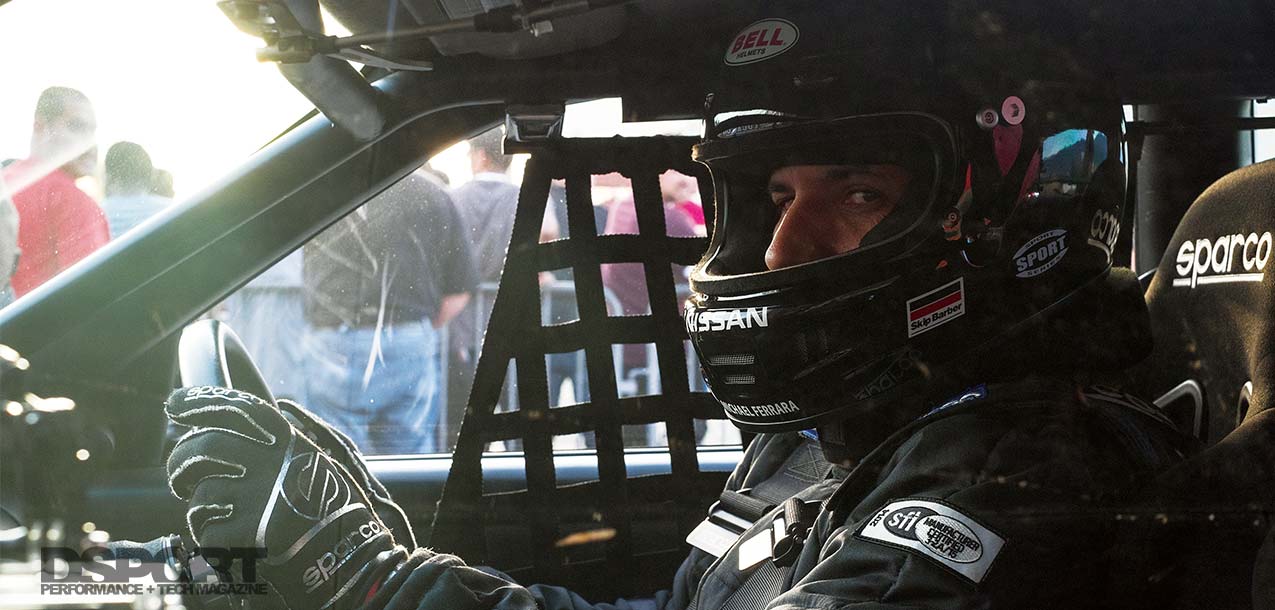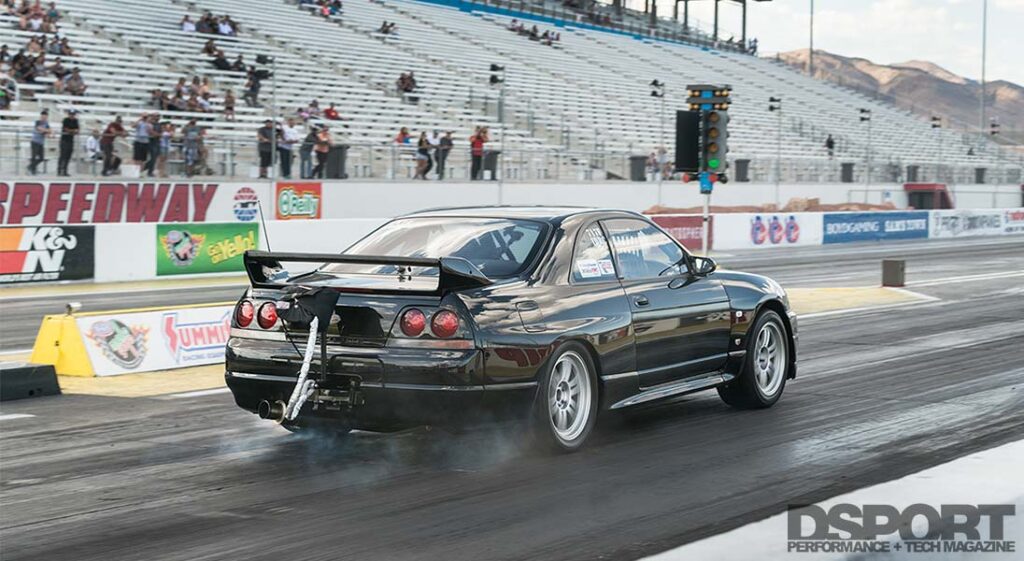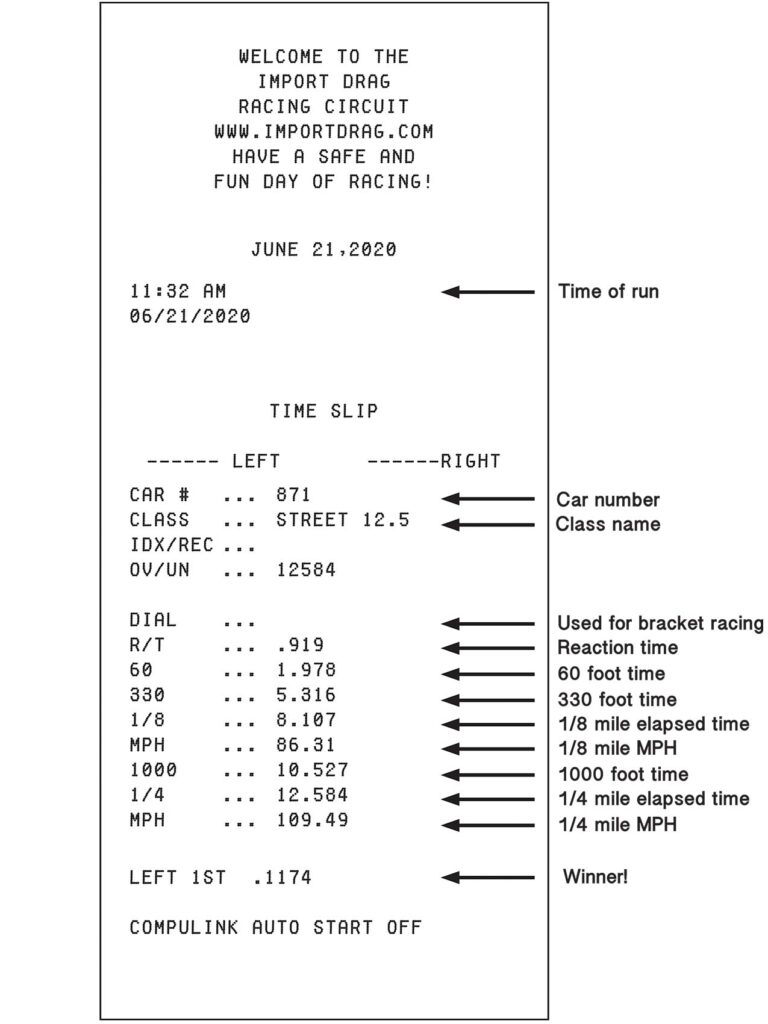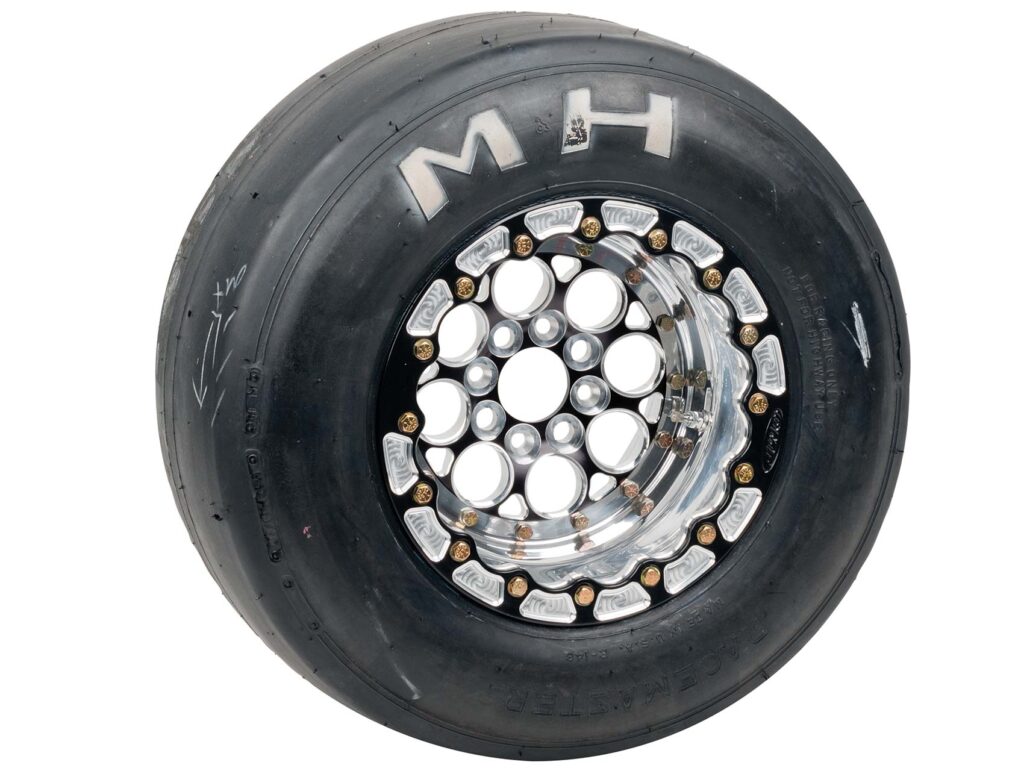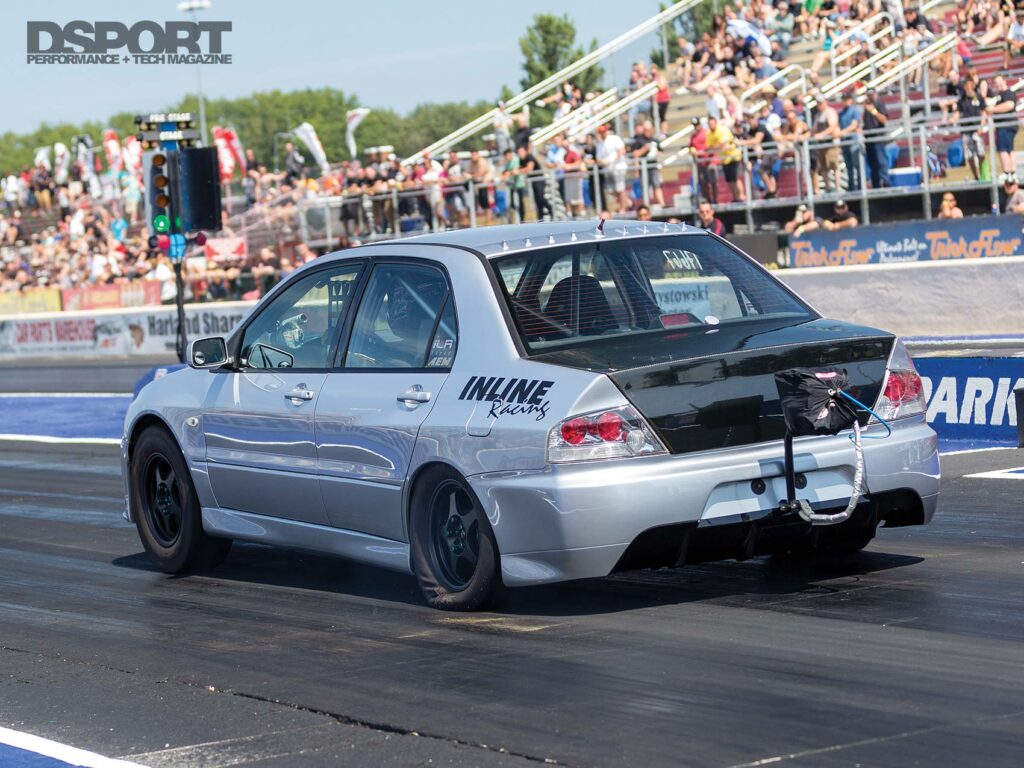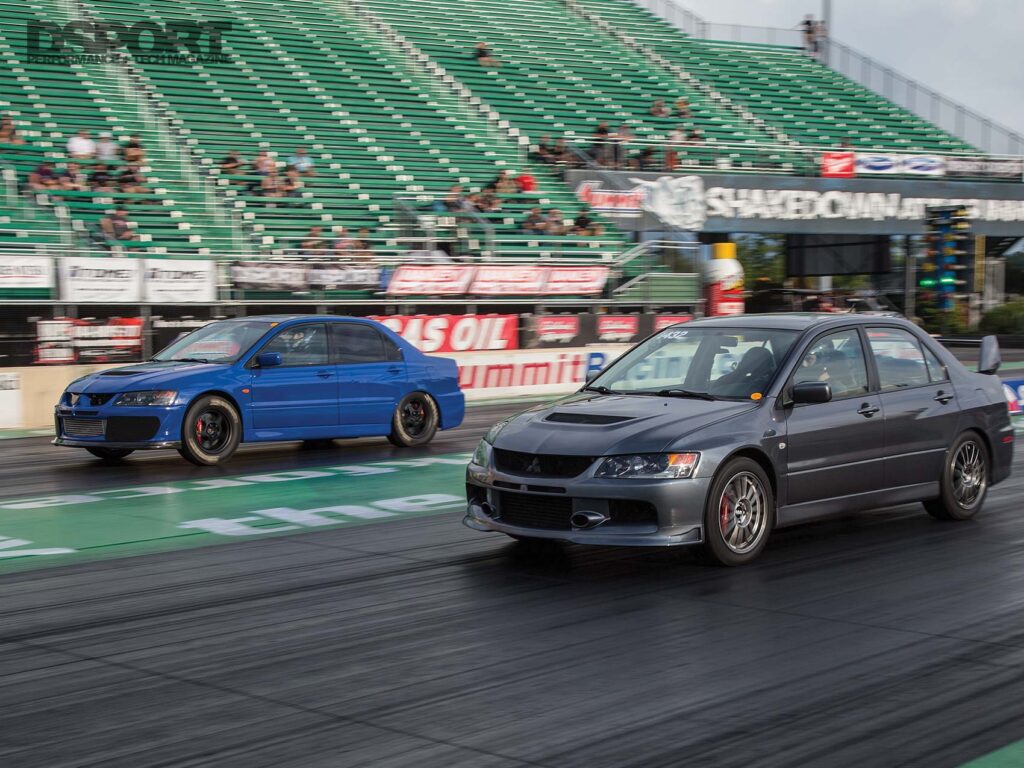So you finally made it to your first drag strip. You launch your car, get to the finish line safely, and on your way back, the track employee gives you a receipt. Your friend tells you that it’s your time slip, so you take a photo of it pointing at your 15-second run time, and post it to your Instagram. If this is all you do with your time slip, then you’re doing it wrong. The time slip could be a great guide to improving your racing technique. Instead of just using it to see how quick your run was (or slow), here’s how to use it to your advantage so you can start improving and save the bragging until you maximize your car’s potential and have the best run you and your car are capable of achieving.
Text by Bassem Girgis // Photos by DSPORT Staff
DSPORT Issue #220
The Time Slip
While it may look like a Walmart receipt, the time slip has valuable information that is critical to improvement and fine tuning, even for the most professional drag racers. In the previous issue of DSPORT (issue 219), we discussed everything you need to know about staging. In that story, we discussed everything that happens from the burnout until your light turns green and your front tire moves past the stage beam. So, what happens after? Once the stage beam is uninterrupted from your front tire, it triggers the time and now the clock is officially ticking. On the time slip, you will see R/T (Reaction Time), 60’, 330’, 660’, 1/8-mile, MPH (for the 1/8-mile), 1,000’, ¼-mile, and MPH (again for the quarter-mile). Here’s a breakdown of how each of these is calculated and what they mean to you behind the wheel.
Your time slip can tell you a lot about your driving technique. Your 60-foot time is critical to your overall performance. A slow 60’ can indicate a poor launch. Adjusting tire PSI, launch RPM, clutch slipping, etc. could improve your launch, which would improve your 60’ time and your elapsed time.
Reaction Time
The reaction time is the time it takes from when your light turns green, until your front tire stops interrupting the stage beam. This plays into shallow and deep staging that we discussed in the previous issue. The deeper you’ve staged, the more you are at risk of red-lighting. The shallower you stage, the higher your reaction time will be, but you will have more of a chance to complete the run without red-lighting. Be sure to read our Drag Racing 101 story in the previous issue to find out the best practice for you. Once you move past the stage beam, you move onto the 60-foot time on your slip.
In the midst of being overwhelmed with your first launch, beginner racers often forget to turn off their traction control. With traction control on, your system detects the smallest wheel slippage and automatically applies the ABS to that wheel or cut engine power to it. Obviously, the last thing you want during launch is any types of braking. This completely kills your time. While we say wheel slippage hurts your 60’ time, some degree of slippage is necessary to protect your transmission.
60-Foot
As the name implies, the 60-foot mark is 60-feet away from the starting line triggered by an infrared beam. The first time I dragged raced, I kept looking at the elapsed time and I never paid attention to my 60-ft. My time never improved even though I kept trying to shift quicker. When I looked at my 60-ft time, I realized that my AWD WRX should be capable of half of that time on its worst day. This told me that I am launching all wrong. This time will tell you how well you’re launching. If your tires are slipping too much on the launch, your 60-ft time will hurt. The more your 60-ft time decreases, the better your launch will get. Your 60-ft time will vary depending on the tires you use, your type of tires, your launching technique (clutch release, launch RPM, etc.), the track preparation, and how hot the track is. However, if you’re comparing runs from the same day, you should be able to fine tune your style to reduce that number.
Switching to performance tires or drag radials will show massive improvement in your 60-foot time, which will result in a much improved elapsed time. Tire slippage will hurt your 60’ time, and while adjusting the tire pressure, launch RPM, and clutch slipping/dumping techniques can show lower times; upgrading the tires will be most rewarding.
330’, 660’, 1/8-Mile, 1,000’ Time
You launch successfully, the car takes off, and you have your best 60-ft time. Now comes the shifting. 330-feet away there is another beam, followed by the 660-feet (1/8-mile), and the 1,000’. These beams measure all of these times respectively. Beyond the 60-foot time comes your first-to-second gear shift, and how quickly you’re shifting, how properly you’re shifting, and the correct RPM you’re shifting at will affect your time. The 330’ and the 660’ are the middle-of-the-track guide that allow you to improve on shifting between first-to-second, and second-to-third depending on your transmission’s gear ratios. Some tracks like Irwindale Dragstrip are only 1/8-mile. In which case, that’s your last stop before you are braking. Everything between your 60-ft and your finish line can help you improve on shifting through the gears.
1/4-Mile
The goal is to have the best quarter-mile time, so your last step is the 1/4-mile/finish line beam. Once you cross the finish line, the clock stops and your elapsed time is the result. The elapsed time starts when the stage beam is uninterrupted and the finish line’s beam is interrupted. So, if your tree goes green and you never move, your elapsed timer won’t start until your front tire rolls past the stage light; however, your reaction time starts with the green. Finally, to measure your MPH, the speed trap sits 66-feet before the finish line. The speed trap records the average speed between that 66-feet and the finish line, and that shows on your time slip as your miles per hour.
Bracket vs Heads-Up
Bracket racing is when the competitor predicts (dial-in) how long it will take to reach the finish line. If the competitor reaches the finish line at, or below, his dial-in time before his opponent, he is a winner (given he didn’t red-light). So, if you dial-in at 10.40-seconds, you launch without red-lighting, reach the finish line before your opponent, and finish with a 10.40-seconds or lower, you win. If you finish with 10.41-seconds or higher, you lose.
The same concept goes for handicap racing. The only difference is the driver with the slower dial-in time launches first to get a head start. The difference between the two dial-in numbers is the difference in launch time between the competitors.
Each competitor determines their dial-in time before the race. Some drivers have been racing for decades and they know their cars extremely well, while others make a few runs before their race to determine their dial-in time. The dial-in time gets written on the car.
Also under bracket racing is the index class. In this type, the handicap is pre-determined and the competitors’ goal is to get as close to the index as possible without running quicker. If the index is 10.00-seconds, the competitors will try to get as close as possible to the 10.00-second mark, but not quicker.
As for the heads-up racing, both competitors launch at the same time, and the first to cross the finish line wins. Heads-up racing involves no dial-in time or breakout; however, red-lighting kicks you out of the race as in any type of drag racing.
Heads-up racing does not have a dial-in time or breakout. Both competitors launch at the same time, and whoever crosses the finish line first without red-lighting takes the win.
The Bottom Line
As you can see, the time slip is crucial whether you are trying to improve your launch, shifts, or you are racing in some of the popular drag racing classes and you need to find out your dial-in time. The most important time when you’re starting out is your 60-ft time. This will tell you whether you’re making the best out of your launches or you’re lagging. The better the launch, the better elapsed time you will have. Experiment with your clutch if you’re racing a manual. If you’re dumping the clutch and your tires are spinning too much, try slipping it instead. Experiment with your launch RPM to make sure it’s not too low that you’re having a weak launch or too high that you’re spinning. If you keep spinning, try reducing your tire pressure two to five PSI at a time. Most importantly, make one change at a time so you learn what’s working for you. Once you’ve established what’s working, then try making one more change, reassess, and repeat.


